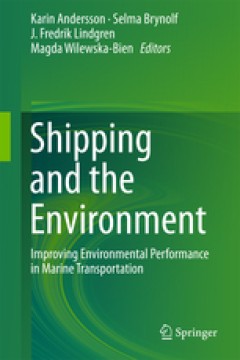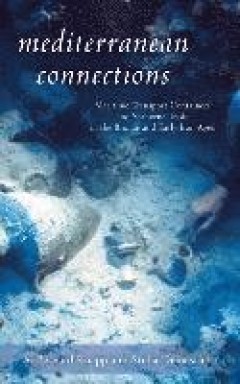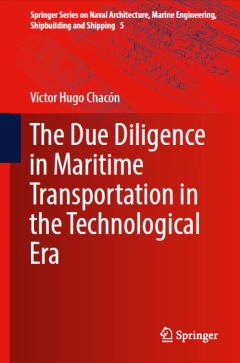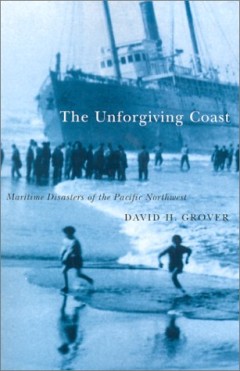Ditapis dengan

Maritime Safety Culture in Europe
Therefore, it was time for the European Union to act and to develop a new concept of safety culture. A parallel can be drawn between the attitude of the International Maritime Organisation (IMO) and the attitude of the European Union. The IMO is well known for promoting and improving safety and also in being reactive to maritime disasters. Now we discover a new philosophy of “anticipating a…
- Edisi
- Managerial Law
- ISBN/ISSN
- -
- Deskripsi Fisik
- 61 halaman
- Judul Seri
- Maritime Safety Culture in Europe
- No. Panggil
- ATC PO LUC a

Long-term container throughput forecast and equipment planning: the case of B…
Abstract Purpose – This paper aims to forecast inbound and outbound container throughput for Bangkok Port to 2041 and uses the results to inform the future planning and management of the port’s container terminal. Design/methodology/approach – The data used cover a period of 16 years (192 months of observations). Data sources include the Bank of Thailand and the Energy Policy and Plannin…
- Edisi
- Maritime Business Review
- ISBN/ISSN
- -
- Deskripsi Fisik
- 18 halaman
- Judul Seri
- Long-term container throughput forecast and equipment planning: the case of Bangkok Port
- No. Panggil
- ATC PO VEE a

Hong Kong maritime arbitration under the Arbitration Ordinance 2011
Abstract Purpose – In 2011, the new Arbitration Ordinance took effect in Hong Kong. This paper aims to discuss the new features on maritime arbitration. Design/methodology/approach – The relevant provisions of the Arbitration Ordinance 2011 and the legal cases are examined. Findings – Hong Kong is a first class maritime arbitration centre in the Asia Pacific Region. Originality/value –…
- Edisi
- Maritime Business Review
- ISBN/ISSN
- -
- Deskripsi Fisik
- 10 halaman
- Judul Seri
- Hong Kong maritime arbitration under the Arbitration Ordinance 2011
- No. Panggil
- ATC PO SIK a

Shipping and the environment : improving environmental performance in maritim…
- Edisi
- -
- ISBN/ISSN
- 978-3-662-49045-7
- Deskripsi Fisik
- xxiii, 426 p.
- Judul Seri
- -
- No. Panggil
- TXT MR AND s
- Edisi
- -
- ISBN/ISSN
- 978-3-662-49045-7
- Deskripsi Fisik
- xxiii, 426 p.
- Judul Seri
- -
- No. Panggil
- TXT MR AND s

Green Maritime Logistics and Sustainability
The environmental consequences of international trade and transport have gained importance as a result of the current climate debate. Products are increasingly being produced in one part of the world, transported to another country and then redistributed to their final country of consumption. Since more than 80% of world trade tonnage measured in metric tons is carried by seagoing vessels, mar…
- Edisi
- 2012
- ISBN/ISSN
- 978-1-78052-340-8
- Deskripsi Fisik
- 20
- Judul Seri
- Maritime Logistics
- No. Panggil
- TXT LO LIN s

Review Of Maritime Transport 2014
Global economic growth faltered in 2013 as economic activity in developing regions suffered setbacks and as the situation in the advanced economies improved only slightly. Prospects for the world economy, trade and shipping seem to be improving although a number of risks mostly on the downside remain.
- Edisi
- -
- ISBN/ISSN
- 978-92-1-112878-9
- Deskripsi Fisik
- xiii, 118 p., : illus: table : 30 cm
- Judul Seri
- -
- No. Panggil
- REF MR UNC r

Regional integration and maritime connectivity across the Maghreb seaport system
Models and empirical studies of port system evolution dominantly focus on land-based dynamics. Hence, it is traditionally recognized that such dynamics condition the evolution of ports and their relations as well as wider regional integration processes. The Maghreb region (Algeria, Morocco, and Tunisia), which is currently responsible for no less than one-third of all African port throughputs, …
- Edisi
- -
- ISBN/ISSN
- 0966-6923
- Deskripsi Fisik
- 14 p.
- Judul Seri
- Journal of Transport Geography
- No. Panggil
- ATC PO RIF r

Ecological modernization and the multi-scaled governance of sustainability in…
Ecological modernization (EM) is often presented as a suitable way to make societies, and the key industries on which they are dependent, environmentally and economically sustainable. This article focuses on the underlying factors that contribute to EM in the shipping industry. The theoretical perspective used stems from critical EM and corporate social responsibility research. The analysis a…
- Edisi
- VOL. 99, NO. 1, 42–58
- ISBN/ISSN
- -
- Deskripsi Fisik
- 18 p.
- Judul Seri
- Geografiska Annaler: Series B, Human Geography
- No. Panggil
- ATC MG YLI e

Mediterranean connections : maritime transport containers and seaborn trade i…
- Edisi
- -
- ISBN/ISSN
- 978-1-315-53700-9
- Deskripsi Fisik
- xii, 259 p.
- Judul Seri
- -
- No. Panggil
- TXT MR KNA m
- Edisi
- -
- ISBN/ISSN
- 978-1-315-53700-9
- Deskripsi Fisik
- xii, 259 p.
- Judul Seri
- -
- No. Panggil
- TXT MR KNA m

The due diligence in maritime transportation in the technological era
- Edisi
- -
- ISBN/ISSN
- 978-3-319-66002-8
- Deskripsi Fisik
- -
- Judul Seri
- -
- No. Panggil
- TXT MR Cha t
- Edisi
- -
- ISBN/ISSN
- 978-3-319-66002-8
- Deskripsi Fisik
- -
- Judul Seri
- -
- No. Panggil
- TXT MR Cha t

Container shipping on the Northern Sea Route
Since the beginning of the 20th century, the principal commercial maritime routes have changed very little. With global warming, the Northern Sea Route (NSR) has opened up as a possible avenue of trade in containerized products between Asia and Europe. This paper verifies the technical and economic feasibility of regular container transport along the NSR. By adopting a model schedule between Sh…
- Edisi
- -
- ISBN/ISSN
- -
- Deskripsi Fisik
- 13 p.
- Judul Seri
- Int. J. Production Economics
- No. Panggil
- ATC LO GRI c

Comparison of trade facilitation at four International ports in Thailand
…
- Edisi
- -
- ISBN/ISSN
- -
- Deskripsi Fisik
- 7 p.
- Judul Seri
- -
- No. Panggil
- ATC PO RUD c

Evaluation of cold ironing and speed reduction policies to reduce ship emissi…
Different port operating policies have the potential to reduce emissions from shipping; however, their efficacy varies for different ports. This article extends existing literature to present a consistent and transferable methodology that examines emissions reduction port policies based on ship-call data. Carbon dioxide (CO2); sulphur dioxide (SO2); nitrogen oxides (NOx); and black carbon (BC) …
- Edisi
- Vol. 16, 4, 371–398
- ISBN/ISSN
- -
- Deskripsi Fisik
- 2008
- Judul Seri
- -
- No. Panggil
- ATC MR WAS e

Policies applied by seaport authorities to create sustainable development in …
Policies for sustainable development of transport rely on three pillars: striving for stable social and economic growth, while reducing the pollution and protecting the natural resources. Seaports play a significant role in economic growth of port cities. In each such a city the port generates even several thousand jobs directly connected with the port operation. Unfortunately, the port activit…
- Edisi
- -
- ISBN/ISSN
- -
- Deskripsi Fisik
- 7 p.
- Judul Seri
- -
- No. Panggil
- ATC PO KOT p
Revew Maritime Transpot 2012
- Edisi
- -
- ISBN/ISSN
- 978-92-1-055950-8
- Deskripsi Fisik
- xiv, 176 p
- Judul Seri
- -
- No. Panggil
- TXT MR UNI r
- Edisi
- -
- ISBN/ISSN
- 978-92-1-055950-8
- Deskripsi Fisik
- xiv, 176 p
- Judul Seri
- -
- No. Panggil
- TXT MR UNI r
Review of Maritime Transport 2013
- Edisi
- -
- ISBN/ISSN
- 978-92-1-054195-4
- Deskripsi Fisik
- xii, 184 p
- Judul Seri
- -
- No. Panggil
- TXT MR UNI r
- Edisi
- -
- ISBN/ISSN
- 978-92-1-054195-4
- Deskripsi Fisik
- xii, 184 p
- Judul Seri
- -
- No. Panggil
- TXT MR UNI r

The feeder network design problem: application to container services in the b…
Global containership liners design their transportation service as hub- and spoke networks to improve the access to local transportation markets and to reduce operational costs by using short-sea connections for low-volume transportation lanes. These connections from the hub ports to the regional ports constitute the feeder network that is serviced by small- or medium-sized feeder containership…
- Edisi
- Vol. 16, 3, 343–369
- ISBN/ISSN
- -
- Deskripsi Fisik
- 27 p.
- Judul Seri
- -
- No. Panggil
- MR

Port efficiency, maritime transport costs, and bilateral trade
Recent literature has emphasized the importance of transport costs and infrastructure in explaining trade, access to markets, and increases in per capita income. For most Latin American countries, transport costs are a greater barrier to U.S. markets than import tariffs. We investigate the determinants of shipping costs to the United States with a large database of more than 300,000 observation…
- Edisi
- -
- ISBN/ISSN
- -
- Deskripsi Fisik
- 34 p.
- Judul Seri
- -
- No. Panggil
- ATC PO MIC p

Maritime policy in the North Sea region : application of the cluster approach
The aim of maritime policy is to achieve continued trade development and hence economic growth while ensuring seas and coastal areas are adequately protected. Historically, many policy decisions, not least with regard to maritime transport, were arrived at from a top-down approach. However, there are criticisms of the top-down policy-making process. This article presents a new bottom-up policy …
- Edisi
- Vol. 16, 4, 484–500
- ISBN/ISSN
- -
- Deskripsi Fisik
- 17 p.
- Judul Seri
- -
- No. Panggil
- ATC MR FLI m

Safety at sea and air transport under EU law
- Edisi
- Vol. 42 Iss 3 pp. 1 - 19
- ISBN/ISSN
- -
- Deskripsi Fisik
- 18 p.
- Judul Seri
- -
- No. Panggil
- ATC MR ZEK s
- Edisi
- Vol. 42 Iss 3 pp. 1 - 19
- ISBN/ISSN
- -
- Deskripsi Fisik
- 18 p.
- Judul Seri
- -
- No. Panggil
- ATC MR ZEK s

Operations research methods in maritime transport and freight logistics
The current decade has witnessed a remarkable growth in container transportation and vessel sizes. This has come alongside an increasing need for optimisation of both on the seaside and on the landside. As the linking nodes, container terminals are facing great challenges in handling, stacking and transferring large numbers of containers, and high productivity is the key factor in maintaining t…
- Edisi
- Vol . 11, 1, 1–6
- ISBN/ISSN
- -
- Deskripsi Fisik
- 6 p.
- Judul Seri
- -
- No. Panggil
- ATC MR MAC o

A critical review of the evolution of the maritime code in the people's Repub…
a.Department of Logistics and Maritime Studies, The Hong Kong Polytechnic University, Hong Kong, People’s Republic of China; b.Division of Business, Hong Kong Community College, The Hong Kong Polytechnic University, Hong Kong, People’s Republic of China; c.Department of History, Hong Kong Baptist University, Kowloon Tong, Kowloon, Hong Kong, People’s Republic of China; d.Department o…
- Edisi
- Vol. 31, No. 2, 115–127
- ISBN/ISSN
- -
- Deskripsi Fisik
- 14 p.
- Judul Seri
- -
- No. Panggil
- ATC MR TAN a

Challenges in the maritime-land interface : maritime freight and logistics
As the containerization of the global economy reaches a phase of maturity and rationalization, ports find themselves embedded in ever changing commercial environment where logistics is at the forefront. The global market place, with powerful and footloose players, extensive business networks within complex logistics systems, have a dramatic impact on the raison d'être of seaports. The new logi…
- Edisi
- -
- ISBN/ISSN
- -
- Deskripsi Fisik
- 29 p.
- Judul Seri
- -
- No. Panggil
- ATC MR NOT c

Vietnam: Maritime Spat Stirs Domestic Dissent
- Edisi
- Vol. 20 , 24
- ISBN/ISSN
- 1356-7888
- Deskripsi Fisik
- 3 p
- Judul Seri
- Strategic Comments
- No. Panggil
- ATC MR NIC v
- Edisi
- Vol. 20 , 24
- ISBN/ISSN
- 1356-7888
- Deskripsi Fisik
- 3 p
- Judul Seri
- Strategic Comments
- No. Panggil
- ATC MR NIC v

The Unforgiving Coast: MARITIME DISASTERS OF THE PACIFIC NORTHWEST
- Edisi
- -
- ISBN/ISSN
- 0-87071-541-0
- Deskripsi Fisik
- x, 215 p
- Judul Seri
- -
- No. Panggil
- TXT MR GRO t
- Edisi
- -
- ISBN/ISSN
- 0-87071-541-0
- Deskripsi Fisik
- x, 215 p
- Judul Seri
- -
- No. Panggil
- TXT MR GRO t

Maritime Transportation Research: Topics and Methodologies
The purpose of this paper is to review and analyze maritime transportation academic research. For articles published in Maritime Policy & Management (MPM) in the period 2001 to 2012, the most frequent topics addressed include shipping performance/ management and shipping finance. For articles published in Maritime Economics & Logistics (MEL) in the period 2002 to 2012, the most frequent top…
- Edisi
- Vol. 40, No. 7
- ISBN/ISSN
- 1464-5254
- Deskripsi Fisik
- 18 p
- Judul Seri
- Maritime Policy & Management: The flagship journal of international shipping and port research
- No. Panggil
- ATC MR TAL m
Space Technologies and Climate Change: Implications for Water Management, Mar…
- Edisi
- -
- ISBN/ISSN
- -
- Deskripsi Fisik
- 175 p
- Judul Seri
- -
- No. Panggil
- TXT MR OEC s
- Edisi
- -
- ISBN/ISSN
- -
- Deskripsi Fisik
- 175 p
- Judul Seri
- -
- No. Panggil
- TXT MR OEC s

Knowledge Resource in Maritime Transport Industry : A Case Analysis
In recent years, maritime transport operators (i.e. port operators, shipping lines and freight forwarders) have been faced with a rapidly changing business environment. As a result of this, they have been forced to make complex decisions in ways that will allow them to effectively respond to these environmental challenges. This paper attempts to examine which environmental challenges marit…
- Edisi
- Vol. 26. No. 2
- ISBN/ISSN
- -
- Deskripsi Fisik
- 44 p
- Judul Seri
- -
- No. Panggil
- ATC MR LEE k

Operational risk management in maritime transport : tools, trends, methodolog…
- Edisi
- Volume 27 Number 3
- ISBN/ISSN
- -
- Deskripsi Fisik
- 6 p.
- Judul Seri
- -
- No. Panggil
- ATC MR THA o
- Edisi
- Volume 27 Number 3
- ISBN/ISSN
- -
- Deskripsi Fisik
- 6 p.
- Judul Seri
- -
- No. Panggil
- ATC MR THA o

The effect of maritime transport costs on the extensive and intensive margins…
This article investigates the determinants of maritime trade. It focuses in particular on the extent to which variations in trade-related costs between Asia and Europe help to explain the surge in Euro–Asian trade in eight of the most emblematic categories of products related to Asian success: textiles, footwear, confection, machinery, electronic products, vehicles, furniture and pharmaceutic…
- Edisi
- Vol. 16, 3, 276–297
- ISBN/ISSN
- -
- Deskripsi Fisik
- 22 p.
- Judul Seri
- -
- No. Panggil
- ATC MR BEN t

Applying the doe toolkit on a lean-and-green six sigma maritime-operation imp…
The purpose of this paper is to provide a case study on endorsing process improvement in maritime operations by implementing design of experiments on Lean Six Sigma performance responses. It is demonstrated how process efficiency and environmental muda may be dealt with simultaneously in a lean-and-green project driven by hardcore Six Sigma tools
- Edisi
- Vol. 2 Iss 3
- ISBN/ISSN
- -
- Deskripsi Fisik
- 17 pages
- Judul Seri
- International Journal of Lean Six Sigma
- No. Panggil
- ATC MR GEO a

Chapter 12 green maritime logistics and sustainability
The environmental consequences of international trade and transport have gained importance as a result of the current climate debate. Products are increasingly being produced in one part of the world, transported to another country and then redistributed to their final country of consumption. Since more than 80% of world trade tonnage measured in metric tons is carried by seagoing vessels, mari…
- Edisi
- 04 Feb 2016; 227-244.
- ISBN/ISSN
- 978-1-78052-340-8
- Deskripsi Fisik
- 20 p.
- Judul Seri
- Maritime Logistics
- No. Panggil
- ATC LO LIN c

Strategies for improving a long-established terminal’s performance: a simul…
Due to a long-lasting increase in global trade, only interrupted by the late-2000s economic crisis, container traffic has grown dramatically. As a result, new terminals have opened and existing terminals face much higher container handling than before. In order to meet these challenges, one of the biggest container terminals in Turkey has begun to reconsider its terminal operations and to achie…
- Edisi
- -
- ISBN/ISSN
- -
- Deskripsi Fisik
- 25 p.
- Judul Seri
- -
- No. Panggil
- ATC LO GUJ s
 Karya Umum
Karya Umum  Filsafat
Filsafat  Agama
Agama  Ilmu-ilmu Sosial
Ilmu-ilmu Sosial  Bahasa
Bahasa  Ilmu-ilmu Murni
Ilmu-ilmu Murni  Ilmu-ilmu Terapan
Ilmu-ilmu Terapan  Kesenian, Hiburan, dan Olahraga
Kesenian, Hiburan, dan Olahraga  Kesusastraan
Kesusastraan  Geografi dan Sejarah
Geografi dan Sejarah